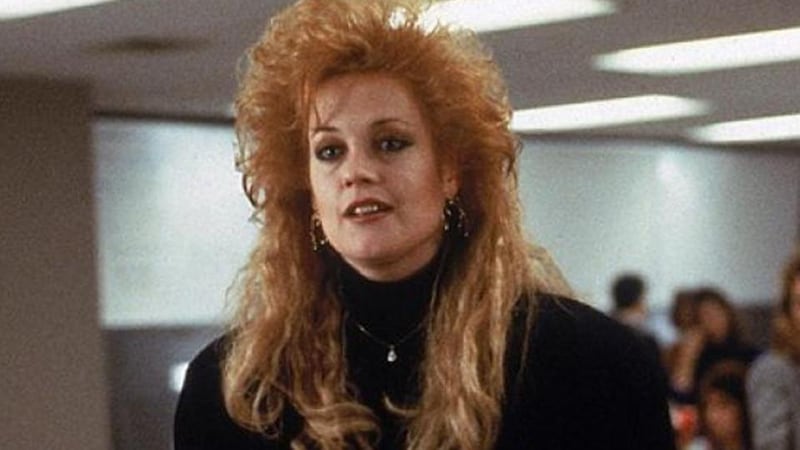What do the world’s most powerful women have in common? It’s not necessarily their acumen or intelligence. Often, it’s a distinct physical signifier. Hillary Clinton’s trouser suits and sensible heels. Margaret Thatcher’s helmet hair and armour handbag. Anna Wintour’s sharp bob and sunglasses. The women who hold the reins in many important companies are easily identified by their work uniforms.
It's power-dressing, but not as we knew it. Gone are the cliched images of permed Working Girl Tess McGill rooting through her ruthless (female) boss's closet, searching for something – anything – that will make her look more authoritative.
At the time, however, McGill’s power-dressing struggle was one that women could identify with. At the start of the film, she wears big shoulder pads and bigger hair to occupy more physical space in the male-dominated office where she works. Later on, as she wears the slinky, well-cut clothes of her nefarious superior, she discovers that power-dressing isn’t the same as powerful dressing.


What Tess – an intelligent and unfairly maligned worker – really needs to assert her dominance is creativity and confidence in her abilities. Her working wardrobe is only a stepping stone towards achieving her real goals.
When Working Girl came out, in 1988, the concept of power-dressing was at saturation point. It had gone beyond the simple idea of helping women (and men) to look more assertive and professional in the workplace and mutated into a hyper- conservative caricature: dark-coloured suits with exaggerated shoulders, big hair and tailored trousers. Women's necks eventually disappeared into their Thierry Mugler shoulder pads. By 1990, the trend was dead, but its spectre hovers over every woman with a full-time office job.
Ambitious and inclusive
At the end of October, the Design Museum in London opened the exhibition Women Fashion Power. The space, ambitious and inclusive in scope, was designed by award-winning architect Zaha Hadid, and was opened by Anne Hidalgo, the first female mayor of Paris.
Not a Multiple Choice is the Design Museum's ambitious subtitle for the Women Fashion Power exhibition. Women are the focus, but the exhibition aims to create an entente between the notion of power and the trivial action of picking an outfit in the morning. Included are outfits from the wardrobes of designers Vivienne Westwood, Diane von Fürstenberg and Zandra Rhodes. Chief executives and executives are also give a fair shake: Anna Jones of Hearst Magazines; Wei Sun Christianson, chief executive of Morgan Stanley China; and Alfiya Kuanysheva, chief executive of BATT, Kazakhstan, are just some of the businesswomen given space at the museum.
Alongside the clothes are other artefacts of women's ability to harness clothing to their advantage, including cigarette cards featuring the glamorous Marlene Dietrich and first World War-era female munition workers in overalls and headscarves; a patent application for a bra; and circle skirts printed with pictures of the Beatles .
Women Fashion Power grandly aims to demolish the sense of judgment levelled at women in the workplace who dare to care about their clothes. Once upon a time, power-dressing was about how women fitted in with in a sea of men. Today, powerful dressing is about setting a woman apart in an ocean of people. Interestingly, this shift in the power dynamic is not relevant to men, who are for the most part given a choice of suits in navy, grey or black.
Every outfit in the exhibition is different: the lack of uniformity is what really shines through. The subjects use their clothes as a declaration of professional intent. Genevieve Bell, an anthropologist, and vice-president at Intel, who is profiled in the exhibition, says that, as a woman in tech, she is conspicuous as soon as she enters a room, so she feels as if there is no point in dressing to fit in.
How odd it is that, when we think of bold, competitive women in business, we think of what they wear. And yet it is not odd at all. Women have always been effective communicators, and clothing is just another avenue by which we communicate with each other. Powerful dressing is a woman exercising her ability to communicate efficiently with clothing. It is just good business.
Women Fashion Power is at Design Museum in London until April 26, 2015











